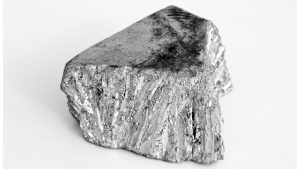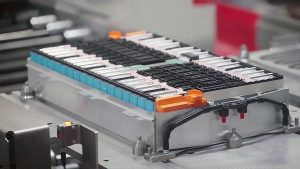The University of British Columbia’s W Scott Dunbar examines the actions needed for the development of a Canadian battery metals supply chain.
As the transition to electric vehicles (EVs) accelerates, the need to secure a battery metal supply chain is essential. Canada should secure its place as a global supplier of battery metals, as it has the necessary resources and infrastructure to produce metals vital to EV batteries.
To achieve this, the country must facilitate collaborative partnerships between mining companies, mining suppliers, manufacturers, recyclers, and end-users. The battery metals ecosystem in Canada must champion flexibility and adaptability, ensuring that all sectors are involved. Canada has all the necessary components needed to develop a global battery metals supply chain, and with further collaboration between various fields, the country will secure its place as a key global supplier.
Constraints on a battery metal supply chain
Resources of battery metals such as nickel, cobalt, lithium, and graphite, are abundant in Canada, but the ability to develop an ‘end-to-end’ supply chain to extract these resources, process them into battery-grade materials, and manufacture batteries is constrained by several fundamental factors.

One significant constraint is the size of the deposits. Many ore deposits for battery metals are too small or too low grade to justify the sizeable investment needed to develop a deposit into a mine, resulting in a major obstacle to the growth of the upstream part of the supply chain. A related constraint is location. Mine development needs expensive infrastructure such as roads, water, and power for mine operations that are not always available in remote areas, especially because deposits are widely dispersed across the country. In addition to the high capital cost of developing a small ore deposit, there is considerable risk and uncertainty commensurate with geological targets of any size.
Once the ore is mined and processed into a concentrate, it needs to be further processed or refined into battery-grade materials. However, the lack of refining and chemical processing capacity in Canada often results in the export of concentrates to locations where such facilities exist. Canada urgently needs domestic refining for copper, lithium, nickel, and graphite. Supply agreements, such as those recently arranged with Volkswagen and Mercedes-Benz can promote the development of this downstream end of the supply chain.
These constraints always arise in discussions about the future of battery metals in Canada and have historically resulted in an impasse. This suggests that the current mining and mineral processing paradigm, and the associated organisational structure of the mining industry itself, should be examined carefully and perhaps modified to apply to battery metal supply. What might such an evolution look like?
Alternative sources
Several alternative sources of battery metals merit consideration.
For example, tailings produced by mining operations often contain significant amounts of metal due to incomplete mineral recovery, especially in the case of older operations. Wastewater from mining or other industrial operations can also contain metals of interest. Steelmaking slag is another potential source of battery metals, such as manganese and phosphorous. Lithium ions are present in the brines of old oil and gas reservoirs and can be extracted using a variety of highly selective methods that leverage existing infrastructure.

Lithium-ion batteries are an obvious alternative source of lithium, nickel, and cobalt. Recycling of spent batteries begins with mechanical processes that reduce the size of the batteries and isolate the parts containing the metals of interest. The resulting product is then sent to a facility where hydrometallurgical processing produces lithium, cobalt, and nickel chemicals required for batteries. Electronic waste also contains battery metals and similar mechanical, and hydro- or bio-metallurgical processes can be used to extract the metals of interest.
A problem with these alternative sources is that they are widely dispersed and require processing near their location of disposal to produce a high-value product that is worth transporting to a processing plant to produce metals or battery-grade materials. Batteries are a particular challenge because they are considered a dangerous good and subject to restrictions on their transportation across provincial borders. However, the barriers can be overcome using different technologies and different organisational models.
Available technologies
Discussion about any aspect of the mineral resources industry must assume that methods of metal extraction and processing, as well as the amount and kinds of metals used in manufacturing, will change due to advancing technology. New technologies can improve efficiency and make it feasible to obtain battery metals from a variety of sources. What is more interesting is how they can make new organisational models possible.
There are well-established physical, chemical, and biological methods for the separation of minerals in the ore and for the extraction of metals from these minerals. Minerals containing battery metals have physical properties, such as density, colour, and electrical conductivity, that can be measured and used to distinguish and separate them from other minerals in crushed ore. The result of the separation processes is a mineral concentrate. The selectivity and low cost of some methods of metal separation and extraction could enable the extraction of battery metals from a number of alternative sources, including waste materials.
Much of the risk associated with mine development can be eliminated or mitigated by developing a mine in stages using less expensive mobile and modular mining and processing plants. New advances in technology are making modularity and mobility possible and lead to flexible systems that can adapt to changes in orebody conditions and increase or decrease capacity in response to changes in demand. In some situations, these systems could be operated with minimal human intervention or even remotely. Flexible and modular design can also reduce the physical and environmental footprint of mining.
Different organisational and business models
What kind of company would invest in the available technologies to extract minerals from relatively small mines or produce battery metals and materials from alternative sources? Can these technologies be effective and efficient using the current mining industry business paradigm? There are several barriers as described above and different kinds of organisational and business models are needed to break the impasse.

The components of different models are already available and organised into a network known as the Battery Metals Industry Ecosystem Map. The various parts of this network are separated into ‘silos’ of mining, materials production, end-users, recyclers, etc. This is perhaps expected given the way the metals supply industry has developed in Canada (and indeed across the world). But to be effective, more interconnections between the members of these silos must be established. The result would be distinctly different from the current organisational model used by the metal supply industry.
New entrants to the network are needed, particularly ones that could provide products or services for other members of the network. This would add interconnections and strengthen existing ones. The first step is to expose possible points of entry within the supply chain and identify any barriers to entry. Suppliers, a company, or a group of entrepreneurs with access to a technology would be attracted by the business opportunity of providing a service to a growing customer segment. Participation by First Nation communities would increase the geographical base of the network, facilitate the development of all types of metal sources, contribute to economic reconciliation, and strengthen Canada’s ‘brand’.
Sub-networks within the network would evolve depending on specialisations of members. One network might specialise in processing tailings to extract metals, another on processing mineral concentrates, and another may be focused on recycling metals from scrap. Different suppliers could serve different parts of the network. Competition among suppliers to provide services combined with collaboration among suppliers would promote innovation.
A useful underlying business model to guide this transformation is servitisation, or X as a Service (XaaS), where X is a process or set of processes (e.g., ore sorting and crushing, logistics, energy supply, waste processing) used at particular stages of battery metal extraction. Only the service is provided; the associated assets are owned by the provider or other third parties. This is the model used by ride-hailing services (‘Just the ride please’), by jet engine manufacturers such as Rolls Royce (‘Power-by-the-hour’), by explosives manufacturers who provide rock blasting services, and, in part, by some mineral processing equipment manufacturers. Its advantages are that the receiver of the service does not require expertise in providing the service and does not need to own or maintain the equipment used to provide the service.
Large resource companies could seize the opportunities provided by a network and the servitisation organisational model of battery metal supply, but it is equally likely that entrepreneurs could form new businesses or partnerships to fill the gaps. The resulting disruption will have many benefits for the battery metal industry in Canada.
The path forward
Government policies are needed to encourage the formation and development of battery metal supply networks. But research and education in mineral resources are equally, if not more, important to these networks. Mineral resources is a very broad, multi-faceted topic that includes many fields, such as science and engineering, economics, finance, public policy, law, and community relations.
Research is needed to advance the development of networks and technologies for efficient, low footprint extraction, and processing of metals. Education at all levels is needed to increase awareness and reveal opportunities for more public and industry engagement in battery metal supply. Canada has all the components to do these things, but some purposeful assembly is required if it wants to be a global participant in battery metal supply and a supplier of choice.
W Scott Dunbar
Professor
Norman B Keevil Institute of Mining Engineering
The University of British Columbia
https://mining.ubc.ca/
https://www.linkedin.com/in/scott-dunbar-157792a8/
Please note, this article will also appear in the twelfth edition of our quarterly publication.









